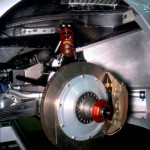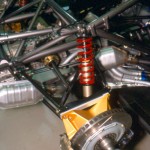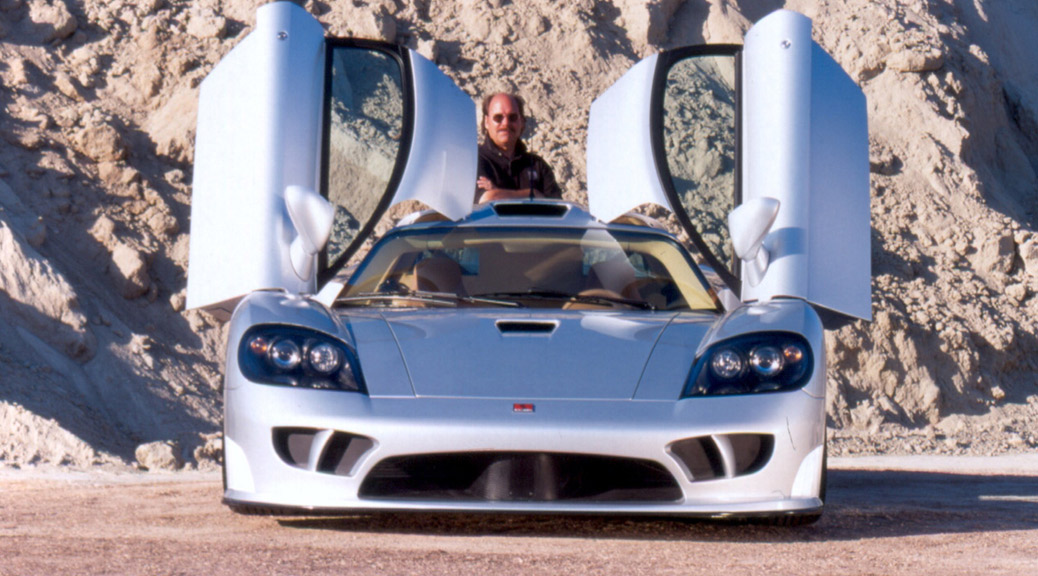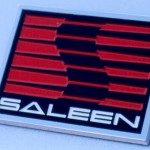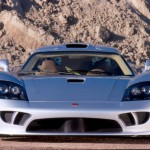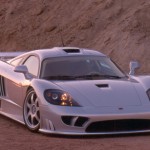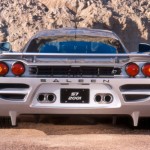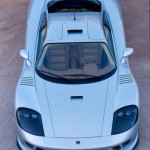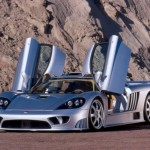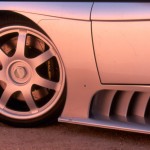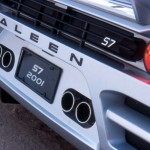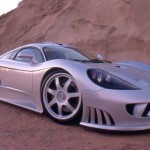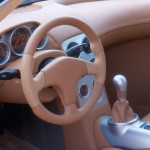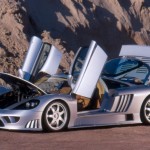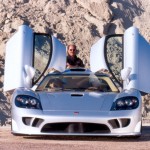FOR IMMEDIATE RELEASE
2001 S7 Mixes Sophisticated Materials And Track Proven Technology
IRVINE, Calif. — Saleen, Inc., internationally known specialty vehicle manufacturer and racecar builder, has created the first true American supercar with the launch of the 2001 S7. The S7 is designed to compete with the most exclusive high performance cars in the world, while providing a distinctly American driving experience. Top speed, quickness, and racecar handling are combined with luxury and everyday road dynamics.
The S7 chassis and suspension is the result of Saleen’s years of racetrack and racecar experience. As part of their industry leading Niche Manufacturing process, which uses best-in-practice original equipment (O.E). support from around the world, famed British racing house Ray Mallock, Ltd. (RML), was enlisted to assist in developing the S7’s advanced chassis, suspension system and overall packaging.
The S7 architecture begins with a space frame chassis to which honeycomb composite reinforcing is grafted. Suspension is fully independent unequal length “A” arms. Distinctive CNC machined billet aluminum spider web-like uprights allow airflow to brakes and wheel bearings, which facilitates cooling and increases durability. Lightweight aluminum dampers with coil over springs are used on all four corners.
With a 106-inch wheelbase and 68.75-inch front track, the S7 has a relatively big footprint. This works to enhance stability. Overall the Saleen S7 is 188 inches long and 78.3 inches wide. The car is only 41 inches high, three inches lower than a Lamborghini Diablo, and tips the scales at about 2750 pounds, again besting the Diablo by 650 pounds.
Brakes are Saleen engineered/Brembo-supplied with 6-piston 15-inch ventilated discs in front and 14-inch for the rear. Wheels are center hub-mounted units specially engineered for the S7. The car is fitted with Pirelli P-Zero Rossa tires, with fronts being 275×30-19 and the rears 355×25-19.
The S7 fuel tank is in the center of the car, which allows for better overall packaging, increased safety and less handling deviation between full and light fuel loads.
In designing the S7, Saleen put drivability on a wide variety of road surfaces high on the list of objectives. And, while the S7 would be at home on any racetrack, it is also a car that can be driven with pleasure on highways, autobahns and back roads. The Saleen S7 hit its engineering target of providing best-in-class performance with great driving pleasure.
The Saleen S7 is certified for sale in both the United States and United Kingdom. Designed and built at Saleen’s Irvine, California manufacturing facility, the S7 is sold in the U.S. through select Saleen Certified Ford dealers and other newly added Saleen Certified dealers specializing in exotic automobiles. Vehicles for Europe and the Middle East will be produced at a satellite facility in conjunction with RML located in England. Worldwide volume is projected to be 300-400 cars over the estimated four-year production run. Work has begun on a less-expensive, higher volume model that will help achieve sales goals.
The Saleen S7 went on sale at its introduction at the famed Monterey Historic Races on August 19, 2000. First vehicles will be delivered to customers in the second quarter of 2001. The Manufacturer’s Suggested Retail Price (MSRP) is $375,000.
The 2001 Saleen S7 is a proof of concept for what Saleen, Inc. has been building for 17 years. As a federally certified specialty vehicle manufacturer, Saleen has produced over 7000 vehicles – using and perfecting the efficient Niche Manufacturing process, which is now being studied and adopted by the world’s major automakers as they strive to quickly and economically bring small volume products to market.
Saleen, Inc. facilities include total research, design, engineering, and manufacturing capabilities. The company’s line also includes the Saleen S281 Mustang, Saleen XP8 Explorer, the SR Widebody, Saleen Performance Parts, and Saleen Engineering and Certification Service.
Contact:
Michael F. Hollander, Pacific Communications Group – 310.224.4981
S7 Release, S7 Chassis, S7 Engine, S7 Body and Design, S7 Features, S7 Manufacturing


